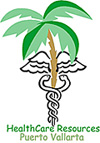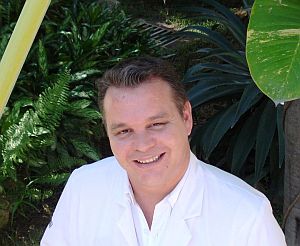Puerto Vallarta, Mexico - Spider Veins are quite common, more so in women than in men. HealthCare Resources interviewed Puerto Vallarta Vascular Specialist / Surgeon, Dr. Hector Escoto to learn a bit more about this condition.
HCR: What is the medical term for "spider veins"?
Dr. Escoto: Spider veins are a common, mild variation of varicose veins. This condition is medically called "telangiectasias."
HCR: What are the causes?
Dr. Escoto: There are several factors that can cause telangiectasia:
• Age: The development of spider veins may occur at any age, but usually occur between the ages of 18 and 35 years, peaking between 50 and 60 years.
• Gender: Females are affected approximately four to one over males.
• Pregnancy: Pregnancy is a key factor contributing to the formation of varicose and spider veins. The most important factor is circulating hormones that weaken vein walls. There is also a significant increase in the blood volume during pregnancy, which tends to distend veins, causing valve dysfunction which leads to blood pooling in the veins. Later in pregnancy, the enlarged uterus can compress veins, causing higher vein pressure leading to dilated veins. Varicose veins that form during pregnancy may spontaneously improve, or even disappear a few months after delivery.
• Lifestyle/Occupation: Those who are involved with prolonged sitting or standing in their daily activities have an increased risk of developing spider or varicose veins. The weight of the blood continuously pressing against the closed valves causes them to fail, leading to vein distension. Family History: If other family members had varicose veins, there's a greater chance you will too.
• Obesity: Being overweight puts added pressure on the veins.
HCR: Are they dangerous? Or are they usually removed only for cosmetic purposes?
Dr. Escoto: Spider veins alone are not a dangerous condition but a cosmetic issue. If you have spider veins, plus varicose veins it is important to rule out an underlying condition (such as venous valve deficiency.)
HCR: How can they be prevented?
Dr. Escoto: There is no way to completely prevent this condition. But improving circulation and muscle tone can reduce the risk of developing varicose veins/spider veins or getting new ones. The same measures taken to treat the discomfort of varicose veins at home, can help to prevent varicose veins, including: Exercising, watching your weight, eating a high fiber/low salt diet, avoid high heels and tight hosiery, elevating your legs, changing your standing/sitting position frequently.
HCR: How can they be removed?
Dr. Escoto: There are two options for this medical condition:
• Sclerotherapy: This is the "gold standard" and is preferred over laser for eliminating spider veins and smaller varicose leg veins. A sclerosant medication is injected into the diseased vein so that it hardens and eventually shrinks away.
• Skin Laser: This is a new technology. With this treatment, we close of smaller varicose veins and spider veins. Laser surgery works by sending strong bursts of light onto the vein, which causes the vein to slowly fade and disappear. No incisions or needles are used.
Each month, HealthCare Resources and Dr. Escoto have a Vascular Clinic. This is a screening clinic for circulation, blood flow, vein evaluation. If you would like further information, please contact us at pamela(at)healthcareresourcespv.com.
 Pamela Thompson has lived and worked in Puerto Vallarta for over 17 years, 10 of them in health care. Pamela now leads HealthCare Resources Puerto Vallarta, a local healthcare resource network. Her years of experience and expertise are available to you by emailing your questions to pamela(at)healthcareresourcespv.com or by visiting HealthCareResourcesPV.com.
Pamela Thompson has lived and worked in Puerto Vallarta for over 17 years, 10 of them in health care. Pamela now leads HealthCare Resources Puerto Vallarta, a local healthcare resource network. Her years of experience and expertise are available to you by emailing your questions to pamela(at)healthcareresourcespv.com or by visiting HealthCareResourcesPV.com.Click HERE to learn more about the health and well-being services offered by HealthCare Resources Puerto Vallarta.



